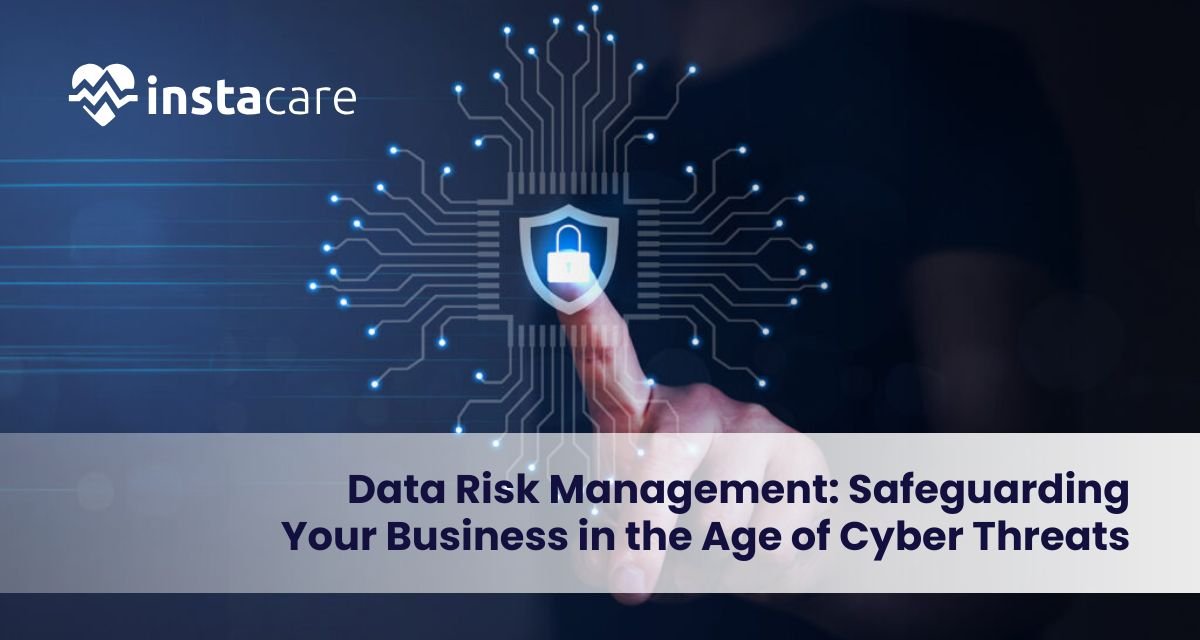Last updated on Friday, 10, October, 2025
Table of Contents
Data Risk Management: Safeguarding Your Business in the Age of Cyber Threats
Data risk management is a must in this age of a technology-dominated world to safeguard precious data from hackers. Data risk management is a process of search, evaluation, and countermeasures against the threat that destroys data integrity, privacy, or availability. Assets can be safeguarded and customer confidence can be provided through good governance, compliance with regulatory requirements, and technology solutions.
What Is Data Risk Management?
With the present computer technology, where information is trusted for conducting the business, decision-making within the business, and relationship with customers, among the most critical of business plans is managing data risk. It is that ongoing set of locating, examining, and addressing potential dangers that will violate the confidentiality, integrity, or availability of the information.
The importance of data risk management is that it protects confidential information against internal and external threats in the form of cyber attacks, data loss, and system malfunction. As businesses are creating a lot of information regarding employees, employees, and external partners, they require adequate defense measures so that they don’t fall prey to absolute misuse or loss of precious information.
Types of Data Risks
Companies operating in today’s world are confronted with different data risks whose occurrence is traceable to technical and human errors. The categorization of these types of risks constitutes the beginning step towards crafting a good data risk management framework.
- Cyber Attacks: Phishing, ransomware, and malware attacks are likely to breach systems and disclose confidential information.
- System Failures: Software or hardware malfunction is most likely to destroy data or render it unusable.
- Third-Party Data Breach: Third-party business vendors or partners occasionally will have inadequate business controls and leak information unintentionally.
- Cloud Threats: Poor cloud infrastructure access controls or settings may include enabling exposure.
Few of them require much more sophisticated data security and risk management that must be tailored to suit a company’s niche environment and activity.
The Data Risk Management Process
Effective data risk assessment procedure is a range of controls formulated to identify prospective weaknesses and avail the remedial action in advance of time before they grow in magnitude.
- Asset and Risk Identification: It begins with a compilation of all the assets belonging to the data category, i.e., financial data, personal data, and operational data. The risks to the assets are to be mapped as a list afterwards.
- Risk Analysis: It is done by giving numerical values to the probability and potential impact of each risk. Quantitative or qualitative methods may be applied in trying to rank high-risk areas.
- Risk reduction: After vulnerabilities are identified, organizations must develop means of reducing exposure using firewalls, encryption, or access control.
- Involuntary Response: Where and when an information breach or loss does occur, organisations will be required to have within regulatory timescales in place arrangements for recovery from system failure and notification of stakeholders.
This approach facilitates effective proactive mitigation of the risk and facilitates best practices in data governance and risk management.
Improve Data Risk Management Practices
Businesses must introduce best practices for data risk management as per industry norms to provide additional security against forthcoming cyber attacks.
- Institutionalize Risk Awareness Culture: Educate workers on data protection practices and train employees on phishing, password, and social engineering attacks.
- Enforce Access Controls: Limit access to sensitive information individually. This minimizes both insider threats and unauthorized disclosure.
- Regular Security Audits: Perform periodic tests to detect defects in current controls and establish the effectiveness of security controls deployed.
- Data Encryption: Protect sensitive data in storage and during its transmission by encrypting data to avoid unauthorized access.
- Backup and Disaster Recovery: Regularly back up in case of a disaster. Reset information under processes such as. Cyberattacks or system failure.
- Vendor Risk Assessment: Evaluate third-party vendors’ security processes to respond to your business needs.
The Compliance and Governance Role
Compliance and governance is one of the data protection and compliance that places organizations into a regulatory and legal stance. Compliance solutions such as GDPR, HIPAA, and ISO 27001 demand robust control in processing personal and sensitive data.
Compliant data governance and risk management procedures promote accountability by defining the process, role, and management of data throughout its life cycle. Governance procedures also ensure accuracy, consistency, and security of data in an organization and mitigate operating risks.
Utilization of Technology for Smarter Risk Management Implementation
Technology is leading the development of data risk management tools. AI, ML, and automation technologies can be leveraged to detect, detect, and react to threats in real-time.
- Detection of risk using AI and ML: The technologies can scan massive amounts of data to look for suspicious activity and vulnerabilities before they become breaches.
- Automated Monitoring Solutions: Real-time monitoring enables companies to keep up with dynamic threats in the threat environment.
- Cloud Security Platforms: Increasingly, companies are migrating to the cloud, and cloud data risk management software offers continuous visibility and control over sensitive data disseminated across environments.
- Data Loss Prevention (DLP) Systems: DLP systems detect and restrict sensitive data flow to prevent accidental disclosure.
- Encryption and Tokenization: These technologies help safeguard data against abuse, even in the case where systems become compromised.
Benefits of a Good Data Risk Management Framework
A good data risk management framework offers numerous benefits besides data protection.
- Enhanced Security Posture: A good framework keeps loopholes secured and protects defense mechanisms from cyber-attacks.
- Regulation Compliance: Conformity to global standards prevents litigation and retains customers’ confidence.
- Continuity of Operations: Data and business continuity reduce downtime after incidents.
- Better Decision-Making: Conformant data enables improved business planning and decision-making.
- Reputation Protection: Timely data protection safeguards customer trust and ensures brand name.
- Cost Advantage: Detection and prevention of risks early on to save potential cost loss in case of breach.
Like in other industries, quality data risk management in healthcare renders the protection of patients’ data real-time, provides HIPAA compliance, and facilitates electronic health plans securely.
Data Risk Management in a Digital Age
With increasing cyber risk management threats that become increasingly sophisticated, risk management also needs to increase and become more sophisticated. Risk management has to be integrated into everything that the business does, from its infrastructure IT to how its staff conduct themselves.
Aside from all this, organizations need to make data privacy risk management their top priority so that users’ data does not get into the hands of unauthorized individuals and remains free from any exploitation or revelation. This includes confidentiality of personal information and adherence to ethics and lawfulness regulations.
As organizations possess effective data risk mitigation strategies, they are able to maintain non-compliance to a significant extent since they engage in uninterrupted activities even in catastrophes.
Conclusion
Increased world interconnectedness has more to be protected from digital assets. An effective data risk management process can assist businesses in defending their cyberspace, governing their compliance, and reaping customer trust. With technology, governance, and vigilant security combined, businesses can build an effective defense system to drive growth and innovation.
FAQs
1. Why do companies today need data risk management?
Data risk management will allow an organization to recognize and overcome likely vulnerabilities that cause data breaches, loss, or misuse.
2. What are the essential elements of a data risk management framework?
An effective framework includes risk identification, analysis, mitigation, monitoring, and compliance.
3. How does technology improve data risk management?
New technologies such as AI, machine learning, and automation can offer anomalies, unveil threats, and enable real-time monitoring solutions.



